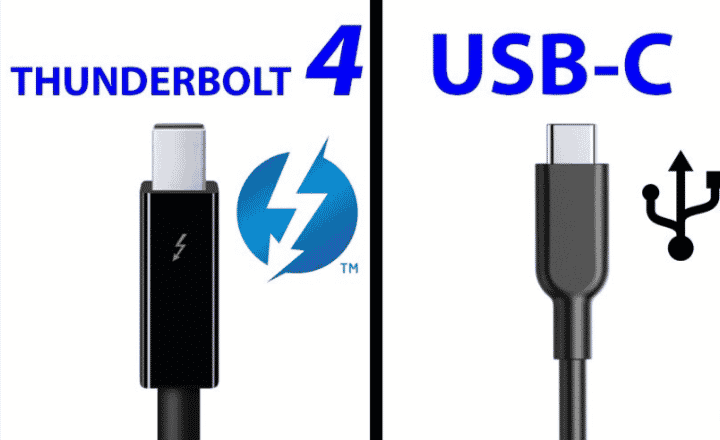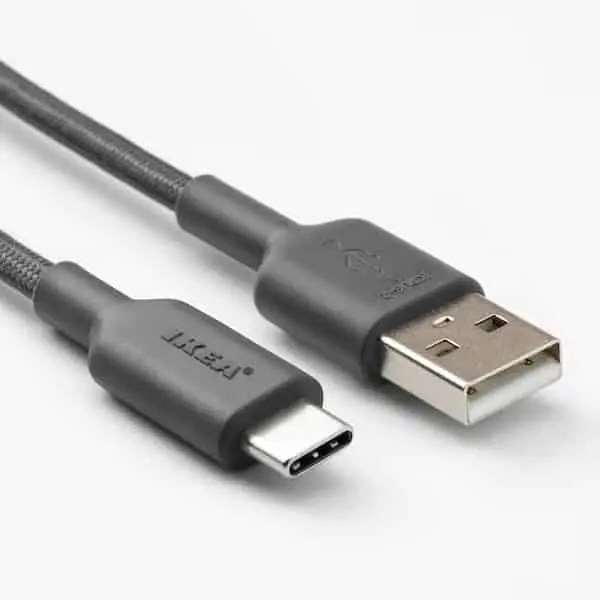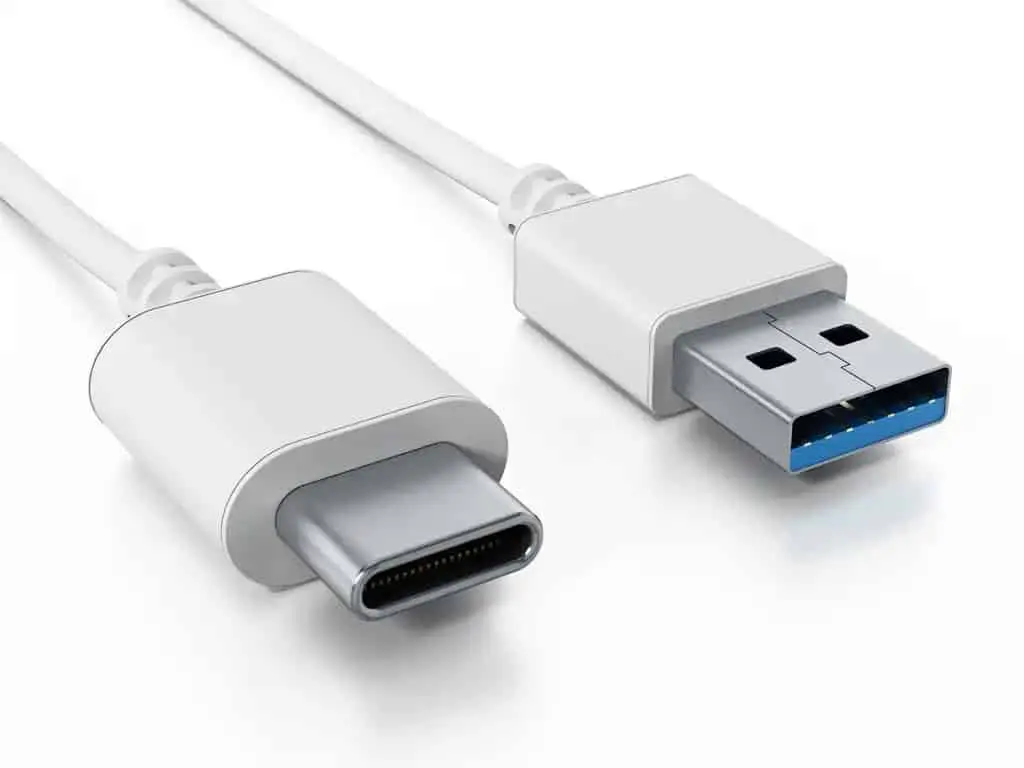Thunderbolt 4 may appear similar to its predecessor, Thunderbolt 3. It retains the USB-C connection, the regular Lightning Bolt symbol, and the highest speeds at 40Gbps. However, it also boosts trust by raising the minimum necessary performance criteria, expanding productivity options for accessories, and enabling USB4 compatibility. Thunderbolt 4 was unveiled by Intel at CES 2020, and the complete specification was issued in July of the same year. A single Thunderbolt 4 cable can carry high-speed data, power and charge devices, and show video on external displays. The debate between Thunderbolt 4 vs USB-C is mostly a matter of personal choice.
USB-C is a type of connection. Thunderbolt 3, Thunderbolt 4, and USB-4 are not the same thing. Those technologies rely only on the connection. To appreciate the differences between those technologies, you must go beyond the USB-C connection, which they all share.
What will you see here?
Is Thunderbolt the Same as USB-C?

Thunderbolt 4 uses the USB-C connection, which is backward compatible with all USB standards. The two are interchangeable in terms of whether you would connect your USB-C custom flash drives to the laptop’s Thunderbolt connector. Some early Thunderbolt versions had a unique connection, but USB-C has been the norm since Thunderbolt 3.
Thunderbolt 4, on the other hand, provides data rates and functionality that no other edition of the USB standard can match. Keep in mind that USB-C is a connection type that supports several standards. Essentially, Thunderbolt 4 can do everything that USB can do. However, it also has other high-performance delights that are unique to it. Let’s take a look at some of those benefits.
Thunderbolt 4 vs. USB-C: Performance Difference

Typically more expensive
In the debate between Thunderbolt vs. USB-C, Thunderbolt is an Intel-owned proprietary technology that is more costly than USB-C. Gadgets with Thunderbolt ports are also more expensive, although Thunderbolt cables may be connected in any case with a USB-C port.
Data Speed
With speeds of up to 40 GB/s, Thunderbolt 4 is presently the market’s most commonly used data transfer technology. USB 3.2 Gen 2×2 has a maximum transfer rate of 20 GB/s. USB4 is capable of speeds of up to 40 GB/, but it is not widely used. Few average users will achieve these speeds. However, the performance might be a game-changer for some.
Ultra HD Display Experience
Despite many USB standards, Thunderbolt 4 has the power to power two 4K screens simultaneously. Furthermore, for those seeking the most extraordinary HD experience, Thunderbolt 4 is the first standard to allow 8K monitors.
PCIe Capability
Thunderbolt 4 now has PCIe capability, allowing you to use high-speed peripherals such as external GPUs directly from your motherboard. That’s ideal for someone who wants to convert their laptop into gaming gear, for example.
Docking Availabilities
Thunderbolt 4 provides enough power to power multiple devices from a single laptop connection. Do you need to charge your phone, power your display, connect an Ethernet wire, or look at the files on that USB card you got at the trade show? All of this can be accomplished with a single Thunderbolt 4 docking station. To get these benefits, ensure that every element in your signal chain is Thunderbolt 4 compliant. Without complete Thunderbolt 4 compliance, performance will be limited to the specifications of the least expensive component.
How do differ between both connections?

While Thunderbolt 4 and USB-C share the same connection, the ports and cables seem to be the same. Many manufacturers distinguish them by including a picture of a lightning bolt or the USB SuperSpeed logo. Unfortunately, these ports are not usually labeled. As a result, you’ll need to consult the device’s paperwork to see which criteria it’s rated for.
However, as Thunderbolt is backward compatible, most consumers will not notice a performance change when plugging a conventional USB-C device into a Thunderbolt port. As a result, it normally won’t matter for average consumers who don’t require the quickest broadband rates. If you require TB4-only functionality, ensure that every component of your signal chain is rated for compliance.
Do Thunderbolt 4 cables work in USB-C ports?

Yes, you can use Thunderbolt cables with USB-C ports. However, Thunderbolt 4 cables will not be supported by every Windows PC with USB-C connections. Look for the distinctive Thunderbolt’s lightning emblem adjacent to or near the port to establish whether or not your PC has a Thunderbolt port.
If you’re in the market for a new computer, ensure it includes a Thunderbolt connector. Many of HP’s laptop and desktop PCs, including the HP Spectre x360 convertible notebook, all HP OMEN PCs, and HP EliteBook laptops, include Thunderbolt connections.
Conclusion
So, Thunderbolt 4 vs. USB-C which one should you choose? It all depends. Most users will find that USB-C cables & ports are more than adequate for connecting and charging accessories and storage devices. While most devices include USB-C connectors, there are a few key reasons why you might favor Thunderbolt over USB-C. Furthermore, with the arrival of Thunderbolt 4, the standards for this technology are much higher – and easily transcend those of USB-C.
Thunderbolt technology, on the other hand, is more costly, and most low-cost PCs and gadgets do not support it. It would help if you considered whether the benefits of high-speed data transfer and daisy-chaining numerous 4K displays are worth the extra expense.
















